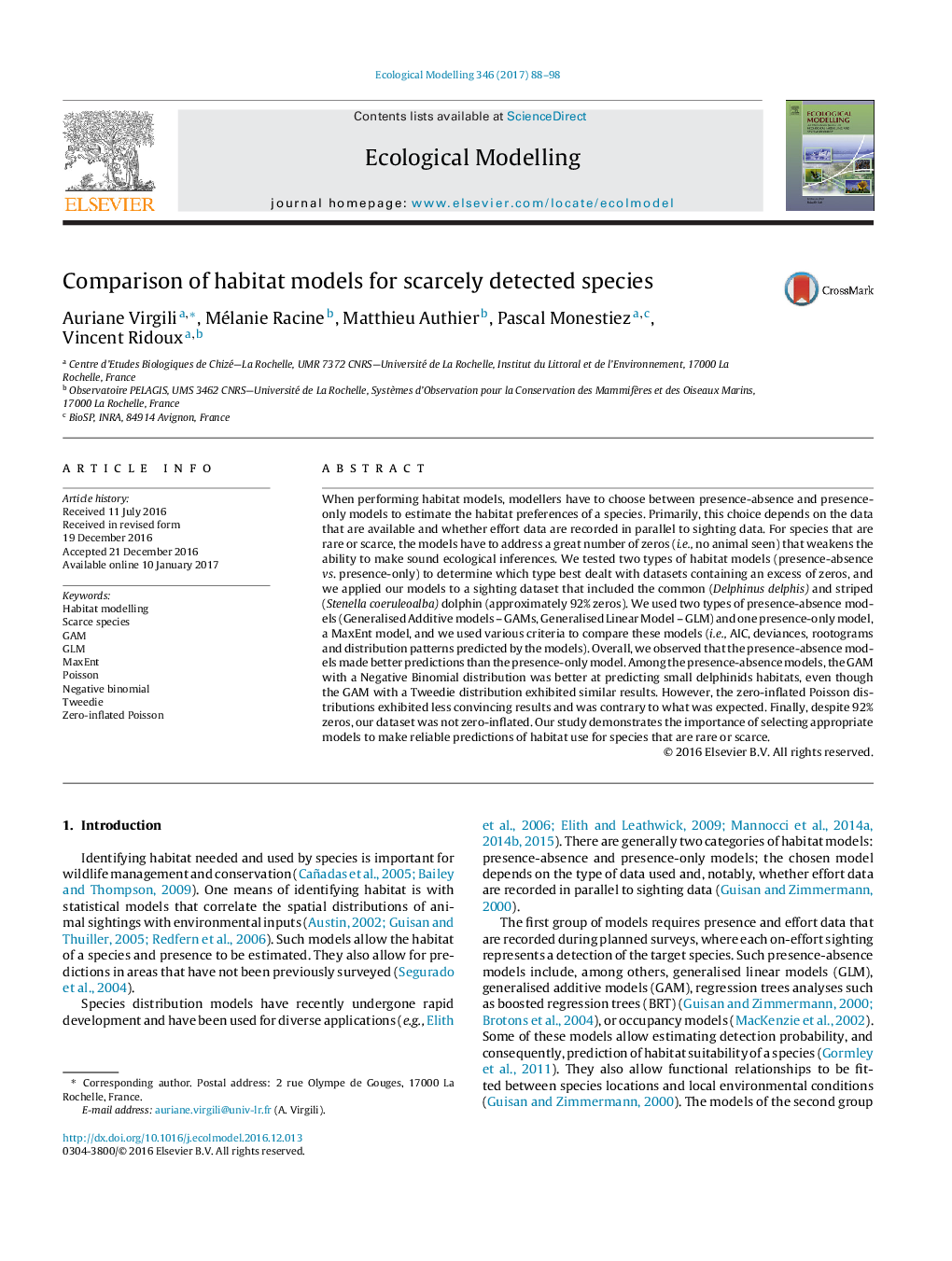| کد مقاله | کد نشریه | سال انتشار | مقاله انگلیسی | نسخه تمام متن |
|---|---|---|---|---|
| 5742348 | 1617401 | 2017 | 11 صفحه PDF | دانلود رایگان |
- Importance of selecting appropriate models for rare species habitat predictions.
- Presence-absence models made better predictions than the presence-only model.
- GAMs with a Negative Binomial and Tweedie distributions better predict the habitats.
- Zero-inflated Poisson distributions exhibited less convincing results.
- 92% zeros in the dataset does not necessarily mean zero-inflation.
When performing habitat models, modellers have to choose between presence-absence and presence-only models to estimate the habitat preferences of a species. Primarily, this choice depends on the data that are available and whether effort data are recorded in parallel to sighting data. For species that are rare or scarce, the models have to address a great number of zeros (i.e., no animal seen) that weakens the ability to make sound ecological inferences. We tested two types of habitat models (presence-absence vs. presence-only) to determine which type best dealt with datasets containing an excess of zeros, and we applied our models to a sighting dataset that included the common (Delphinus delphis) and striped (Stenella coeruleoalba) dolphin (approximately 92% zeros). We used two types of presence-absence models (Generalised Additive models - GAMs, Generalised Linear Model - GLM) and one presence-only model, a MaxEnt model, and we used various criteria to compare these models (i.e., AIC, deviances, rootograms and distribution patterns predicted by the models). Overall, we observed that the presence-absence models made better predictions than the presence-only model. Among the presence-absence models, the GAM with a Negative Binomial distribution was better at predicting small delphinids habitats, even though the GAM with a Tweedie distribution exhibited similar results. However, the zero-inflated Poisson distributions exhibited less convincing results and was contrary to what was expected. Finally, despite 92% zeros, our dataset was not zero-inflated. Our study demonstrates the importance of selecting appropriate models to make reliable predictions of habitat use for species that are rare or scarce.
Journal: Ecological Modelling - Volume 346, 24 February 2017, Pages 88-98
